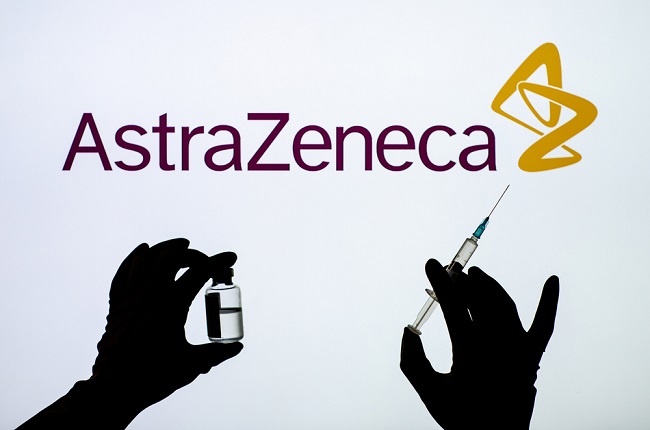Neostigmine is a medication to relieve the symptoms of myasthenia gravis. In addition, this drug is also used in the treatment of postoperative paralytic ileus or urinary retention, as well as helping to relieve the effects of postoperative anesthetics.
Myasthenia gravis is muscle weakness in the body due to disorders of the nerves and muscles. In this condition, the immune system produces antibodies that destroy acetylcholine, a chemical that plays an important role in conveying signals from nerve cells to muscles.

Neostigmine works by slowing down the breakdown of acetylcholine (acetylcholine). With reduced breakdown of acetylcholine, the symptoms of muscle weakness in the body can subside.
These drugs can also interfere with the action of neuromuscular blocking agents, so they can be used to help relieve the effects of postoperative anesthetics.
Neostigmine trademark: Neostigmine-Hameln, Neostigmine Methylsulfate, Tyzox
What is Neostigmine
| group | Prescription drugs |
| Category | Inhibitor cholinesterase |
| Benefit | Relieve the symptoms of myasthenia gravis, paralytic ileus, or postoperative urinary retention, and eliminate the effects of postoperative anesthetics. |
| Used by | Adults and children |
| Neostigmine for Pregnant and Breastfeeding Mothers | Category C: Animal studies have shown adverse effects on the fetus, but there are no controlled studies in pregnant women. The drug should only be used if the expected benefit outweighs the risk to the fetus. Neostigmine can be absorbed into breast milk. If you are breastfeeding, do not use this medicine without consulting your doctor. |
| Medicine Form | Injections and tablets |
Precautions Before Using Neostigmine
The following are some things to consider before using neostigmine:
- Tell your doctor about any allergies you have. Neostigmine should not be used by patients who are allergic to this drug.
- Tell your doctor if you have peritonitis, obstruction of the urinary tract, or obstruction of the digestive tract, including intestinal obstruction. Neostigmine should not be used by patients with these conditions.
- Tell your doctor if you have ever had coronary heart disease, a heart rhythm disorder, or a heart attack.
- Tell your doctor if you have asthma, Parkinson's disease, hypotension, epilepsy, peptic ulcers, kidney disease, or hyperthyroidism
- Tell your doctor if you have recently had bowel or bladder surgery.
- Tell your doctor if you are taking any other medicines, including supplements or herbal products.
- Tell your doctor that you are being treated with neostigmine before undergoing certain medical procedures or surgery.
- Tell your doctor if you are pregnant, breastfeeding, or planning a pregnancy.
- See your doctor right away if you have an allergic drug reaction, serious side effect, or overdose, after using neostigmine.
Neostigmine Dosage and Usage
The dose of neostigmine given by the doctor will be adjusted according to the condition being treated, the age of the patient, and the form of the drug. Here is a breakdown of common neostigmine dosages:
Condition: Myasthenia gravis
Drug form: Neostigmine bromide tablets
- Mature: 15–30 mg, doses are given at intervals adjusted to the body's response to the drug. The total daily dose is 75–300 mg.
- Children aged 6–12 years: 15 mg, the dose may change depending on the body's response to the drug. The total daily dose is 15–90 mg.
- Children aged <6 years: 7.5 mg.
Drug form: Inject
This form of the drug contains neostigmine methylsulfate which will be injected under the skin (subcutaneously/SC) or into a muscle (intramuscularly/IM).
- Mature: 0.5-2.5 mg, the dose is given at intervals adjusted to the body's response to the drug. The total daily dose is 5–20 mg.
- Children <12 years old: 0.2–0.5 mg, the dose will be repeated according to the patient's condition.
Condition: Eliminates the effects of postoperative anesthetics (neuromuscular blockade)
Drug form: Inject
This form of the drug contains neostigmine methylsulfate which will be injected into a vein (intravenous / IV)
- Adults and children: 0.05–0.07 mg/kgBW injected over 60 seconds or more.
Condition: Paralytic ileus or urinary retention after surgery
Drug form: Neostigmine bromide tablets
- Mature: 15–30 mg. The dose and frequency of administration will be adjusted according to the patient's response.
- Children: 2.5–15 mg. The dose and frequency of administration will be adjusted according to the patient's response.
Drug form: Inject
This form of the drug contains neostigmine methylsulfate which will be injected into the muscle (intramuscularly/IM) or under the skin (subcutaneously/SC).
- Mature: 0.5–2.5 mg
- Children: 0.125–1 mg
How to Use Neostigmine Correctly
Neostigmine in the form of an injection will be given by a doctor or medical officer under the supervision of a doctor. Drug injection can be done IM/IV/SC. Always follow the doctor's advice while undergoing treatment with this medicine.
While you are on treatment with injectable neostigmine, your doctor will monitor your blood pressure, oxygen levels, kidney function, and other vital signs. Your doctor will also check your reflexes to make sure that neostigmine is effective in reversing the effects of the anesthetic.
Neostigmine in tablet form needs to be taken according to the doctor's instructions or the instructions on the packaging. Do not reduce or increase the dose taken without a doctor's instructions. This medicine can be taken with or without food. Take the tablet with a glass of water.
If you forget to take a neostigmine tablet, take it immediately if the time lag with the next dose is not too close. If the time lag is too close, ignore the dose and do not double the next dose.
Make sure to have regular check-ups with your doctor on schedule, so that the effectiveness of the drug is monitored. Store neostigmine tablets in a dry and cool place away from direct sunlight. Keep this medicine out of reach of children.
Neostigmine Interactions with Other Drugs
Drug interactions that can occur if neostigmine is used with certain drugs include:
- Decreased muscarinic effect of neostigmine when used with atropine
- Decreased therapeutic effect of neostigmine when used with chloroquine, quinine, hydroxychloroquine, quinidine, procainamide, propafenone, or lithium
- Increased risk of loss of the therapeutic effect of neostigmine when used with aminoglycoside drugs, clindamycin, colistin, cyclopropane, or halogen anesthetics
- Increased risk of occurrence prolonged apnea or prolonged postoperative respiratory arrest if used with muscle relaxants, such as suxamethonium
- Increased risk of prolonged slow heart rate (bradycardia) when used with beta-blockers
Neostigmine Side Effects and Dangers
There are several side effects that can arise after using neostigmine, namely:
- Excessive saliva production
- Nausea or vomiting
- Pupil size reduction
- Have a cold
- Watery eyes
- Excessive sweating
- Slow heart rate
- stomach cramps
- Irregular heartbeat
- Low blood pressure
- Urinating more often
- Diarrhea
- The urge to urinate suddenly appears
- Feeling unwell
- Headache or vertigo
- Muscle twitch
- Faint
Tell your doctor if the above side effects do not improve or get worse. See your doctor right away if you have an allergic reaction or serious side effects, such as:
- Slow heart rate
- Irregular heartbeat
- Low blood pressure
- Faint









